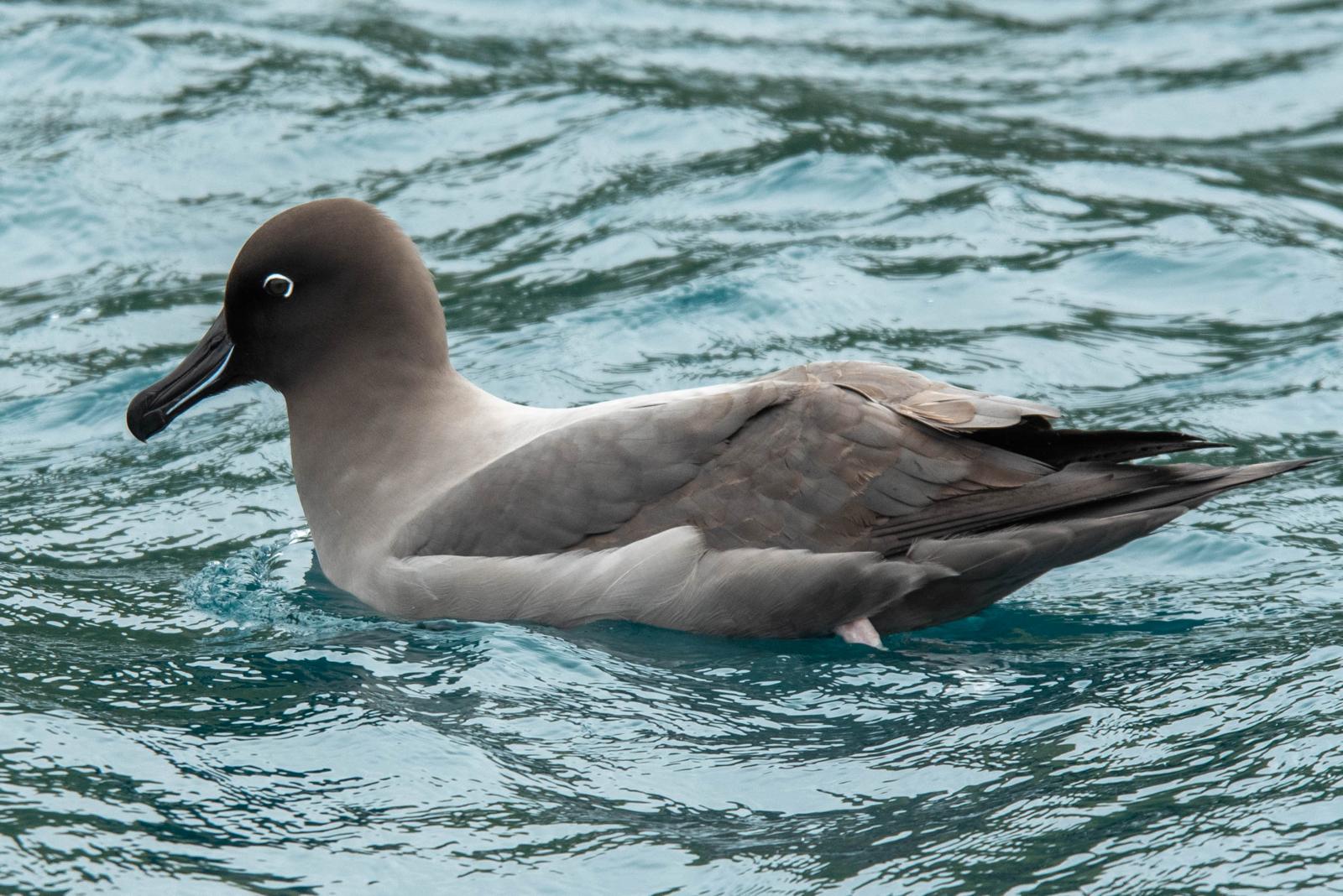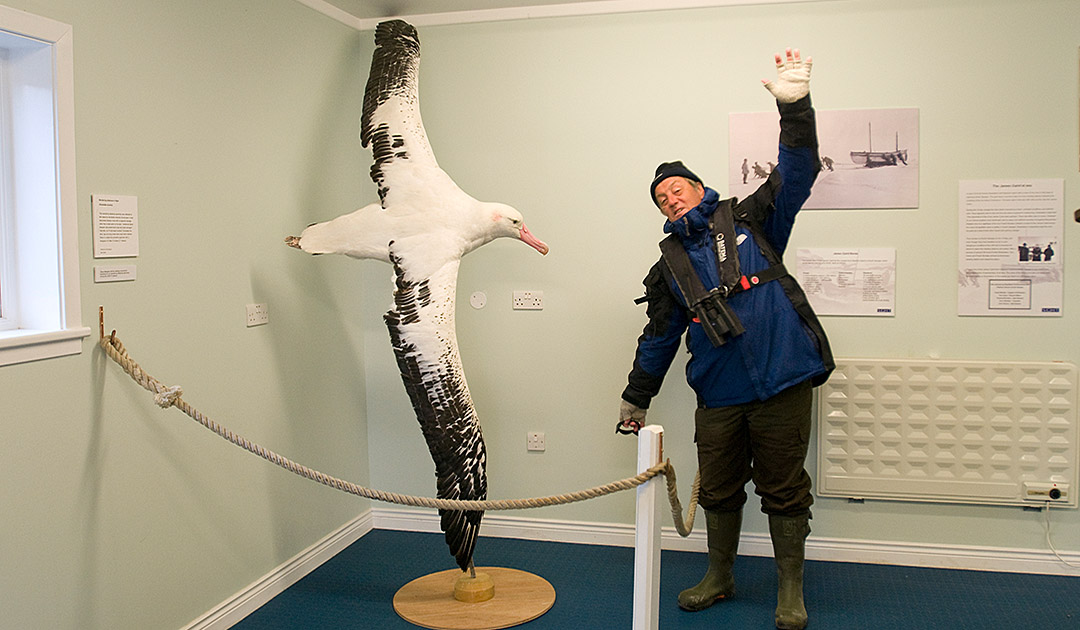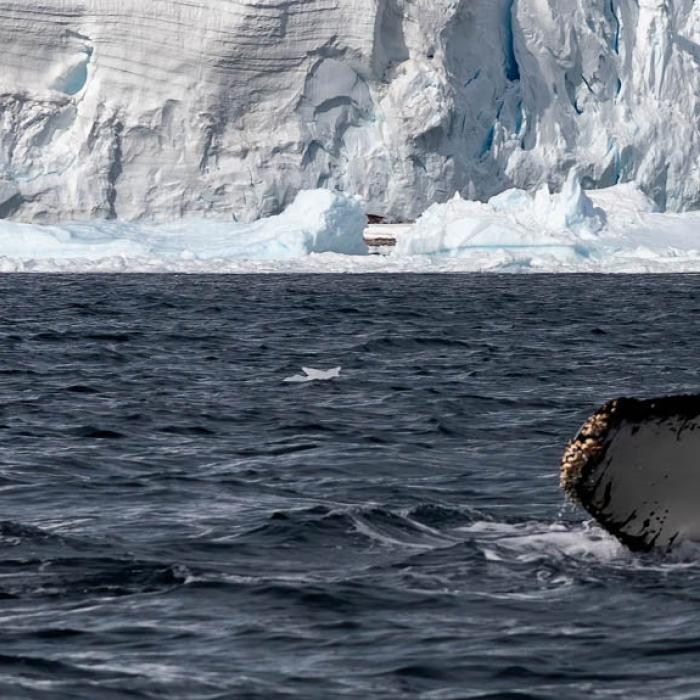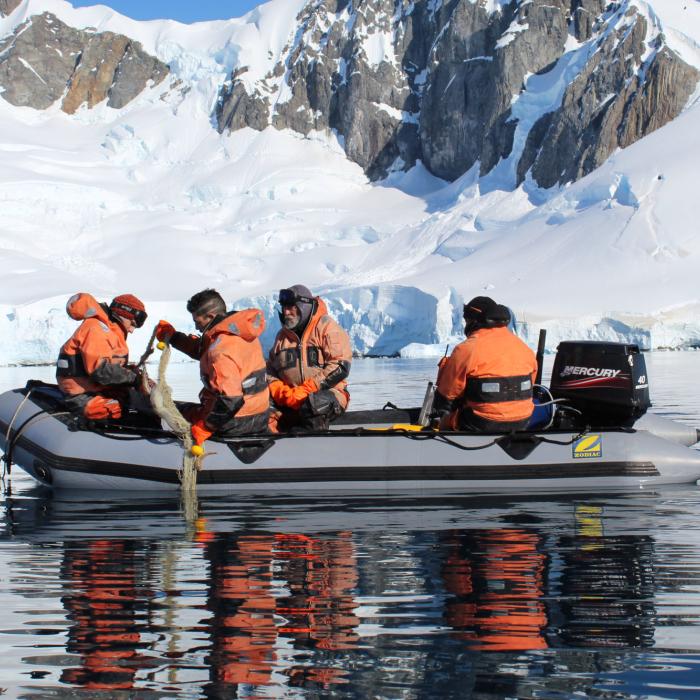
From Folkloric to Fantastic - Five Things you might not know about the Albatross
Happy World Albatross Day! Celebrated on June 19 each year, World Albatross Day honours the 2001 signing of the Agreement for the Conservation of Albatrosses and Petrels (ACAP).
You may be wondering, “what’s so special about albatrosses and petrels”? Well, they defy almost everything we know about what it means to be a bird. They soar thousands of kilometres with just the occasional flap of their wings, have an incredibly strong sense of smell extending nearly 20km (12 miles), and maintain enduring monogamous relationships.
Keep reading for five fun facts about albatrosses to share with your fellow #AntarcticAmbassadors in celebration of these extraordinary birds.
1) The Light-mantled albatross is the only species of albatross that breeds in the Antarctic Treaty System area.
While the wandering, royal, grey-headed, black-browed, and sooty albatrosses can all be seen in the Southern Ocean, the light-mantled albatross has the most southerly distribution. This species is typically seen south of 60 degrees in the Antarctic Treaty area, around the Antarctic Polar Front, and even as far south as 77-78 S in the Ross Sea.
During the 2008-2009 austral summer season, German and Czech scientists discovered a breeding colony of light-mantled albatrosses on a small offshore rock nicknamed “Flat Top” connected to the Fildes Peninsula (King George Island, South Shetland Islands). Though only consisting of five breeding pairs, this is colony is significant. Not only does it mark the southernmost recorded breeding locality of any albatross species, but it is also the only albatross breeding colony within the boundaries of the Antarctic Treaty System.
 Light-mantled albatross - Phoebetria palpebrata. Credit: Jill Niederberger
Light-mantled albatross - Phoebetria palpebrata. Credit: Jill Niederberger
2) Albatross eggs require some of the longest incubation periods of any bird.
The Wandering albatross (Diomedea exulans), the largest species of albatross, incubates its eggs for an average of 78-79 days. Southern royal albatrosses (Diomedea epomophora), second in size only to the wandering albatross, similarly incubate their eggs for an average of 78.5 days, with a range of 74-85 days.
By contrast, the largest species of penguin, the emperor penguin, only incubates its eggs for an average of 64 days, with a range of 62-67 days. This is surprising when you consider that an adult wandering albatross only weighs about 12 kg (28lbs), while an emperor penguin weighs about 40kg (88lbs). Ostriches are the world’s largest birds and lay the largest eggs, weighing 1.4 kg (3lbs), yet their incubation time is only 36-45 days!
3) The world record for largest wingspan of any living species of bird was set by a male wandering albatross.
Wandering albatrosses (Diomedea exulans) are the largest of all albatross species. Their average wingspan is approximately 3.5 metres (~11.5 feet).
The world record for largest wingspan of any living bird species was set by a male wandering albatross that was caught by members of the Antarctic research ship USNS Eltanin in the Tasman Sea on September 18, 1965. His wingspan was 3.63m (11.916 ft), or more than twice my height!
 This wandering albatross is displayed at the Museum of Grytviken. Photo Credit: Heiner Kubny Source: Polar Journal
This wandering albatross is displayed at the Museum of Grytviken. Photo Credit: Heiner Kubny Source: Polar Journal
4) Albatross courtship is incredibly complicated.
All albatrosses have highly ritualised courtship displays with variations in behaviours and different patterns of behaviour between species.
Wandering albatrosses are known to perform 22 distinct behaviours as part of their courtship ritual, including allopreening, making various sounds with their beaks, bowing, sky calling, and more.
Preening refers to when a bird straightens or cleans their feathers with their beak or bill, while the prefix “allo-“ means “other” or “different”. Mating birds preen each other’s feathers to bond and maintain that connection.
Some of the different sounds albatrosses make include rattling, snapping, yammering, and yapping. Scientists describe rattling as the mandibles vibrating quickly "through shallow arcs and volleys of loud, pulsed, rubbery sounds and the head is drawn back and slowly raised." Snapping is described as producing a sound like that made by hitting two pieces of wood together. A 2001 study described, “yammering (YM) is an aggressive act when the bird stretches its neck and head, utters a powerful call and violently claps its mandibles at about 10 claps per second and is often directed at an intruder without any movement,” while “yapping (YA) is used to describe up and down head motions and slightly opened bill…uttering gruff waa-waa-waa vocalisations at about 2-3 waas per second.”
Sky calling refers to when an albatross swings their head up with on open bill, so the head and neck are at a 45-degree (or more) angle, and they are vocalizing towards the sky. Their bills are typically still, and their wings are often outstretched.
Check out wandering albatross courtship behaviour here.
5) Albatrosses can lock their wings in place to save energy.
Albatrosses can take 15,200km trips, circumnavigate the world in 46 days, and maintain flight speeds of more than 127km per hour for more than eight hours all while barely flapping their wings. But how is this even possible?
Albatrosses flap their wings when they are taking off, but once they are in strong winds, tendons in their shoulders lock their humerus bone in place. This locking mechanism keeps the albatross’ wings straight out horizontally and allows them to soar for hours with minimal energetic effort. How long can you hold your arms out to your sides in a T shape?
 Black-browed albatross - Thalassarche melanophris. Credit: Jill Niederberger
Black-browed albatross - Thalassarche melanophris. Credit: Jill Niederberger
Bonus: The scientific name for the wandering albatross Diomedea exulans comes from Greek mythology. Diomedes is the king of Argos and one of the most respected leaders in the Trojan War. However, during the war, he wounded Aphrodite and incurred her wrath, so much so that when his companions later provoked her, she turned some of them into birds. The term exulans, meaning ‘exiled’ or ‘wanderer’, comes from Latin origins and is often said to refer to the birds’ extensive flights. However, the concept of exile still relates to the story of Diomedes. After the war, his kingship was questioned, and he was forced to wander because he could not return to his homeland!
Did you learn something new about albatrosses? Or do you know a fun albatross fact that’s not listed here?
Let us know what you think on Facebook or Instagram – and Happy World Albatross Day!
 About the Author – Hayley Santos Fier
About the Author – Hayley Santos Fier
Hayley is a recent graduate of Stony Brook University’s School of Marine and Atmospheric Sciences where she completed her Master’s degree in Marine Conservation and Policy.
Before joining the International Association of Antarctica Tour Operators (IAATO) as an intern in January 2023, she spent her time interning at zoos and aquariums, learning about husbandry for animals in human care and educating the public about conservation.
As part of her role, Hayley works with IAATO’s Antarctic Ambassadorship Committee to create content and resources to help create and support Antarctic Ambassadors around the world.


